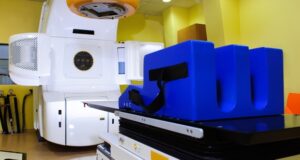In this interview, Rob Brown, Vice President of Product and Pre-Sales at Sapio Sciences, discusses Sapio’s AI-powered lab assistant, ELaiN, and how it is positioning Sapio as a leader in science-aware lab informatics.
Could you please introduce yourself and give us a brief overview of your career and current position at Sapio Sciences?
I’m Rob Brown, Vice President of Product and Pre-sales at Sapio Sciences. I’ve been at Sapio since March 2023, but I’ve worked in the research informatics space for about 25 years with Dotmatics and Accelrys, which became BIOVIA. I started my career as a postdoc at Abbott Labs.
Who is Sapio Sciences, and what does the company stand for in terms of its mission and values, especially within the healthcare and pharma industries?
Sapio Sciences is a research and clinical informatics company. We have solutions that we sell to life science, pharma and biotech, and clinical diagnostic companies. Our platform spans across lab operations, from early discovery all the way through development to manufacturing. At the heart of the solution is the Sapio Lab Informatics platform, and built on that platform, we have our Electronic Lab Notebook (ELN), our Laboratory Information Management System (LIMS), and our scientific data management solution, Sapio Jarvis.
What are the key solutions Sapio Sciences offers to the pharma sector, and what sets them apart from other competitors in the industry?
Our main solutions are our ELN and LIMS, although what really sets Sapio apart is that everything we do is built on a common platform.
Historically, a lab or research department might buy an ELN from one vendor and a LIMS from another vendor and then spend a lot of time trying to make them play nicely together.
Sapio has built a platform where we can surface different capabilities depending on the use case or where a customer is in the research stage. For example, when a customer is in the discovery stage, they will be looking for ELN capabilities, but later in the workflow, they will likely require that same capability as a controlled LIMS process when they need to lock everything down or perform a sequence of experiments across multiple teams.
Essentially, the ELN and the LIMS are different faces on a common platform. There’s a common data model, a common way of searching, and a common way of visualizing and analyzing that information.
What also sets us apart is that it is a low-code/no-code platform. Many legacy vendors in this industry’s platforms build on some very old technology. Ours is very modern, web-based, SaaS, no-code/low-code, and fully integrated across our solutions and out-of-the-box applications, including medicinal chemistry, next-generation sequencing (NGS), histopathology, bioprocessing, and environmental monitoring.
What range of industries can benefit from Sapio Sciences’ solutions, and how do your products adapt to different sectors’ needs?
Practically, any industry that conducts scientific research could use our platform, but the majority of our customers are in biotech, pharma, and clinical diagnostics. That’s why we call our platform “science-aware.” We present the tools and the data in a way that makes sense to scientists.
This differentiates what we do from generic IT companies. These organizations are proponents of using “data lakes” to store information, which is fine in finance, telecoms, or other “non-science” industries, but scientists work with scientific data types and not just text/numbers. . For example, they will want to see the 3D structure of the protein or the entire structure of the small molecule attached to an antibody, which can’t be achieved in a data lake.
But “science-aware” goes further. When a scientist queries a set of data, they will be looking to apply very specific scientific algorithms to figure out what makes a set of molecules active or what makes a particular set of genes have the response that they’re seeing. Scientific analytics and algorithms are required to do that, and they are all built right into our platform.
In an industry as complex as healthcare, how does Sapio Sciences make lab informatics simpler while driving better results for researchers?
We look at this in two ways: how to make life simpler for the scientists using our software and how to make life simpler for the IT departments that have to maintain our software.

Image Credit: Quality Stock Arts/Shutterstock.com
On the IT side, it’s really about our low-code/no-code approach. We’ve designed the Sapio platform to integrate easily into an existing lab and a broader corporate IT landscape. It’s easily configurable and integrates into data models and workflows without having to write vast amounts of difficult-to-maintain code.
For the scientist, we ensure that all of their data is unified, so there is no requirement to look across multiple applications to find a key piece of data. Everything’s presented graphically in clean, modern interfaces, without the requirement to know structured query language (SQL) to search. It’s very easy for a scientist to go in and do their work.
Like any software, you still need to learn how to use it—how to build a data query or enter an experiment, for example. But with ELaiN, Sapio’s Electronic Laboratory Artificially Intelligent Notebook, we have a built-in AI natural language interface directly in the platform that removes that requirement.
As a scientist, I know I want to do it, and the ELaiN, effectively an AI assistant, powers the software for you. If I want to run a search, I could ask, “Find all my samples with particular properties,” and the AI assistant instructs the software to run the search and deliver the results in the most effective way.
It’s a complete paradigm change, and it’s hugely more efficient for scientists, putting them back in the lab doing research instead of trying to figure out software.
Scientists know the problem they want to solve. They now increasingly don’t even have to learn how to use the software to be able to use the software, which is great. Now they’re back in the lab doing something.
What are the key benefits that customers in the medical sector can expect when using Sapio Sciences’ solutions, particularly in terms of efficiency, data management, and research outcomes?
A key benefit of our solutions is the shortening of discovery cycles. For example, using a modern ELN allows scientists to easily capture, analyze, and manage data throughout their research project. This streamlines the decision-making process and makes tracking down data simple, allowing them to move forward much more quickly, potentially saving hours on each research “cycle.”
But it’s not just about speed. It’s also about making more informed decisions. Our platform provides researchers with centralized access to critical data across the organization, which helps them make smarter choices or gain more accurate insights at every step. As a result, they might reach a clinical candidate in half the number of research cycles. Considering that each cycle is measured in weeks, that’s a huge time saver.
When you consider that drug discovery takes years and costs billions of dollars, shaving fractions off the timeline can save huge amounts of money and speed up the time it takes to bring a clinical candidate to market.
When you consider that drug discovery takes years and costs billions of dollars, shaving fractions off the timeline can save huge amounts of money and speed up the time it takes to bring a clinical candidate to market.
What are some of the key challenges you face when developing and refining lab informatics products for the pharma industry, and how do you address them?
Across the pharmaceutical industry, you have a very diverse range of organizations, from small startup biotechs to multinational pharmaceutical companies with thousands of researchers and years of research data.
One of the main challenges is how to build a solution that meets the requirements of all research organizations across this broad spectrum.
With our platform, we’ve identified the main requirements that allow us to meet about 80% of the functionality that’s common across research teams. Every company’s going to have a specific way of working, but 80% seems to cover the core functionality.
Then, we have a very easy way for customers to configure the final 20% to make the technology work for them, matching processes, workflows, or team structures.
A second challenge, especially with larger, more established organizations, is that their existing infrastructure might be 10, 20, or 30 years old, and scientists absolutely rely on those systems to solve a problem in a particular area. So you can’t just rip out the entire infrastructure; you have to play nice, which we do!
Everything comes back to the platform being open, unified, easy to configure, and having pre-configured core capabilities that are common across research and drug discovery.
How is Sapio Sciences leveraging artificial intelligence (AI) in its solutions, and what impact do you see AI having on the future of lab informatics and pharma research?
ELaiN – Science-Aware AI Chat – Search and Plate Set Up Using Voice
AI is going to change everything, but we are still at a comparatively early stage from a drug discovery point of view.
The approach Sapio is taking is to use AI, machine learning (ML), and natural language processing (NLP) to accelerate our vision of making life easier for scientists. We’re doing this by training the AI embedded in our platform to understand what is required when a scientist says, “Make me an experiment with ten samples laid out on a plate,” and to instruct the software in the steps needed to complete the request.
By giving ELaiN access to scientific algorithms, we empower the system to help the scientists. For example, ELaiN can help a researcher make a particular molecule by providing the reaction schemes, essentially performing the task of an expert chemist in a lot less time.
The next step is to apply AI and machine learning to all the research data available within an organization. There are a number of challenges with this, not least ensuring that proprietary information stays secure and confidential and is not shared across other LLMs (Large Language Models).
AI isn’t going to replace scientists, but it might replace those scientists who don’t leverage what AI can do.
AI isn’t going to replace scientists, but it might replace those scientists who don’t leverage what AI can do.
In what ways do you anticipate the pharma industry’s needs changing in the coming years, and how is Sapio Sciences positioning its products to meet those future demands?
When our CEO, Kevin (Cramer), founded the company in the early 2000s, he took a very different approach from many of the other vendors in the industry. They were all about selling a single solution to solve a specific problem.
However, Kevin spent a lot of time building the platform and making sure that the core of the Sapio solutions was a robust, scalable, and future-proofed foundation on which to build applications and tools that would make scientists’ lives easier.
Having this platform to build on means our developers in York, PA, can be super creative in building out solutions that solve the real problems of our customers and keep pace with the rapidly changing landscape in life sciences.
A great example is our GMP LIMS. Working with our customers, we saw the challenges they were having around ensuring GMP compliance in environmental monitoring and stability testing in manufacturing. Our developers were able to build a LIMS that specifically solves these customer problems really quickly as they were building on a robust platform.
Sapio is uniquely positioned in the market to have that dynamic, future-proofed, and innovative approach, so as new science comes along, we can adapt to our customer’s evolving needs
Where can readers find more information?
About Rob Brown
Rob Brown is Senior Director of Product Marketing and Presales at Sapio Sciences. He was previously at Dotmatics, where he was Head of Global Presales, Product Marketing & Product Management. Earlier in his career, he ran product marketing teams at Accelrys, SciTegic, and MSI. Rob started his career as a postdoc and later research scientist at Abbott Laboratories (now Abbvie). He received his PhD in Cheminformatics from the University of Sheffield, UK.




